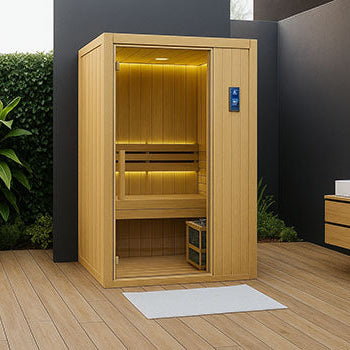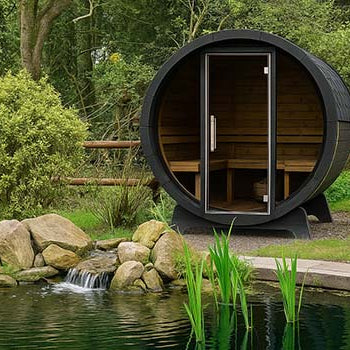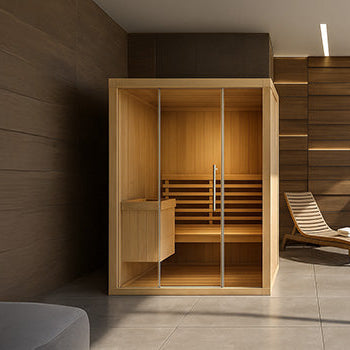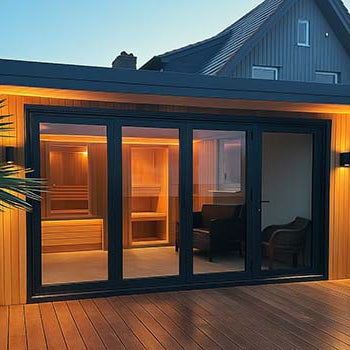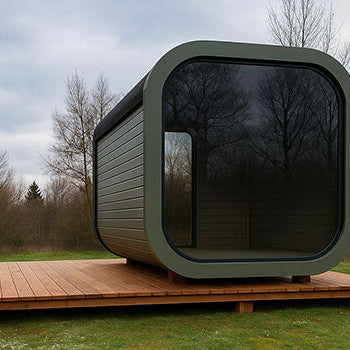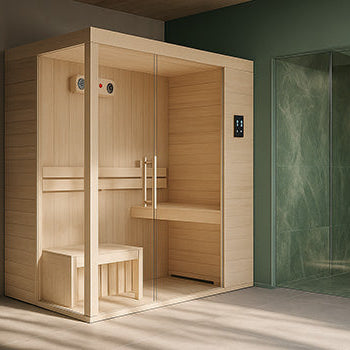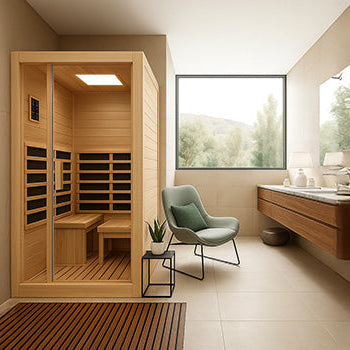Short answer? The best sauna for home use is the one that suits your space, health goals, and budget. You might want a cosy indoor cabin or a sleek barrel sauna tucked away in the garden. Either way, your dream home spa is possible. From steamy Finnish vibes to modern infrared glow-ups, we’re breaking down the best options for your lifestyle. Keep reading—we’re about to make your sauna shopping seriously easier.

Choosing the Best Sauna for Your Home: Key Considerations
Defining Your Needs: Space, Budget, and Health Goals (UK Context)
Before you jump into the world of saunas, take a moment. What do you want this sauna to do for you? Are you chasing deep relaxation, muscle recovery after a gym session, or a full-on detox moment?
Got a tiny flat in London? Then maybe a compact infrared indoor sauna is your vibe. Living in the countryside with room to spare? You might fancy a traditional outdoor sauna tucked beside the garden shed.
Budget plays a big role, too. Portable saunas start under £500, while premium builds can soar into the thousands. It’s all about finding the sweet spot between what you need and what you can realistically install.
And don’t forget health goals. Infrared is fab for skin and muscle therapy, while traditional heat is great for sweating out stress. Think about what your body and lifestyle truly need.
Installation and Electrical Requirements
Here’s the bit nobody tells you until it’s too late: your home sauna needs the right wiring and setup.
Infrared saunas are plug-and-play—usually standard 13-amp sockets in the UK. Super easy. But traditional electric and wood-fired saunas? That’s a different story. These often need a dedicated power supply or even a professional electrician for proper installation.
Also, consider ventilation. Especially if it’s going inside. A small box of heat with zero airflow? Not ideal. Good airflow = better experience, safer usage, and fewer moisture problems.
Running Costs and Energy Efficiency in the UK
Nobody wants a spa day that spikes their energy bill.
Infrared saunas are cheaper to run, typically costing under 50p an hour in most UK homes. They heat up fast and don’t need to work overtime. On the flip side, traditional indoor saunas use more power (around 6kW), and that can get pricey, especially in winter.
Wood-fired models use no electricity, but they need logs, time, and a little patience. So you’re swapping bills for elbow grease.
Look for saunas with good insulation and smart controls to keep costs low and efficiency high. It's not just about buying the sauna—it's about living with it comfortably.
Comparing Popular Home Sauna Types
Infrared Saunas: Pros and Cons for Home Use (Ease of Install, Energy Use)
Infrared saunas are the go-to choice for modern UK homes. They’re sleek, easy to install, and light on the wallet when it comes to power bills.
Pros:
Cons:
-
Lower temperatures (max ~60°C)
-
Doesn’t create the same “steam room” feel
-
Less traditional experience
Perfect for apartments or anyone who wants low-fuss, high-reward heat therapy.
Traditional Electric Saunas: Pros and Cons for Home Use (Classic Heat, Installation Needs)
Want that authentic Finnish sweat lodge feeling? Traditional electric saunas deliver.
Pros:
-
Heats the air to 80–100°C
-
Classic, steamy atmosphere
-
Great for full-body detox and circulation
Cons:
If you love the old-school spa vibe, this is your match. Just make sure your electrics are up to the task.
Wood-Fired Saunas: Pros and Cons for Home Use (Authenticity, Off-Grid Potential, Maintenance)
Feeling rustic? A wood-fired outdoor sauna adds charm and a sense of ritual to your wellness routine.
Pros:
-
No electricity needed
-
Great for off-grid setups
-
Deliciously traditional vibe
-
More intense heat and aroma
Cons:
Ideal for countryside homes or outdoor builds—especially if you love the crackle of real flames.
Portable Saunas: Pros and Cons for Home Use (Budget, Space Saving, Intensity)
Short on space or saving up? Portable saunas are a solid gateway into the sauna life.
Pros:
Cons:
Best for beginners, renters, or small flats. They're a hot fix, literally.
Outdoor/Barrel Saunas: Pros and Cons for Home Use (Garden Feature, Efficiency)
Want your garden to scream luxury retreat? Barrel saunas are stunning—and they work.
Pros:
-
Excellent heat circulation due to the shape
-
Doubles as a garden feature
-
More space inside than you’d think
-
Wood or electric options available
Cons:
-
Needs outdoor prep (level base, clearance)
-
May require planning permission in the UK
-
Pricier than indoor options
They look amazing, heat beautifully, and turn any outdoor space into a spa haven.
Practical Considerations for Home Installation

Indoor vs. Outdoor Placement
Can’t decide where your sauna should live? Here’s a quick cheat sheet:
-
Indoor saunas are easier to access year-round and better protected from UK weather. Perfect for unused corners, garages, or spare bathrooms.
-
Outdoor saunas feel more immersive and spa-like. They’re a fab escape and offer better airflow.
Think about usage frequency and privacy needs. Cold winter mornings might make that outdoor walk less appealing!
UK Building Regulations or Planning Permissions (If Applicable for Outdoor Structures)
In most UK areas, you won’t need planning permission for small outdoor saunas, as long as they’re under 2.5m tall and not too close to a boundary.
But play it safe: always check with your local council, especially if your home is listed or in a conservation area. And if you're running power out there, involve a qualified electrician to keep everything legal and safe.
Size and Capacity Needs
Solo sauna sessions or full-on family spa days?
-
1–2 person saunas are great for smaller homes or couples.
-
3–4 person saunas offer room to stretch out or share.
-
Bigger than that? You’re entering luxury territory—and will need more space and power.
Measure your available area twice. Leave breathing room around the unit for airflow, safety, and comfort.
How to Research and Select Your Home Sauna in the UK
Finding Reputable Suppliers and Reading UK Reviews
Not all sauna brands are created equal. Stick with UK-based sellers who offer real customer support and transparent warranties.
Check:
Top tip: Avoid ultra-cheap models with no reviews or contact info. If it feels too good to be true, it probably is.
Understanding Warranties and Customer Support
Here’s where a good brand earns its keep. A solid warranty = peace of mind.
Look for:
-
At least 1–2 years of coverage on electrical parts
-
Responsive email or phone support
-
Easy returns and UK-based servicing
You want a sauna you can trust—and a team you can call if anything goes wrong.
Conclusion: Finding the Perfect Home Sauna Match for You

So, what’s the best sauna for home use? It’s the one that suits your space, fits your budget, and delivers the benefits you care about most.
Go infrared for modern simplicity and energy efficiency. Pick traditional for steamy, classic spa vibes. Choose wood-fired if you want off-grid charm and that earthy sauna aroma. Or start small with a portable unit and work your way up.
And don’t overlook the wow-factor of a garden barrel sauna, especially if you want to turn your outdoor space into a wellness sanctuary.
Your ideal sauna isn’t just a purchase, it’s a lifestyle upgrade. Take the time to plan, measure, and research. Because when done right, your home sauna becomes your favourite spot in the house.
